Bruce Kirby – Some things never change
Published on September 21st, 2010
Some things never change
(September 21, 2010) The America’s Cup 12 Metre Era Reunion was hosted by New York Yacht Club September 16-19, 2010, bringing together members of the storied 12 Metre era of America’s Cup racing that stretched from 1958 to 1987. Events included the 12 Metre North American Championships on Narragansett Bay and the 17th America’s Cup Hall of Fame Induction Ceremony presented by Rolex Watch U.S.A.
Here Bruce Kirby shares a story from the event:
The 12-Meter reunion in Newport late last week was a blast – scores of old friends, hundreds of lies and half truths. Thinning hair, fading memories pot bellies and lame backs.
There was lots of pomp and ceremony, gallons of booze flowed, and in general the New York Yacht Club’s Harbour Court staff and facility produced an ongoing nautical party equaled only – and just barely – by the 2001 celebration and regatta in Cowes marking the 150th year of America’s Cup competition.
But almost lost in the reporting of events on the weekend was a sailboat race. On Saturday afternoon, before the huge party to mark the induction of this years America’s Cup Hall of Fame newcomers, eleven 12-Meters did battle on Narragansett Bay outside Newport Harbor.
The word on the dock was that this would not be a serious yacht race. The boats carried more than regulation crew – some of them a lot more – and the theme of the weekend was recreation and nostalgia, not yacht racing. But can you really send Ted Turner, Bill Ficker, Robbie Doyle, Dennis Conner and so many others of that ilk out on a race course and expect them not to be “serious?”
I was watching from the penthouse of a friend’s Grand Banks 46 and among many others aboard was my pal Buck Margold. Buck and I shouldered our way into the best spot on the boat and settled in to watch many old friends and competitors play the game.
Unfortunately the eight-knot wind was from the east, blowing out of Newport Harbor and across Narragansett Bay. So to get an upwind start the committee had to set the line out in the main channel with a weather mark right off the entrance to the harbor – a leg of about two miles. The fleet would beat to the mark, leave it to starboard, and then reach out of Narragansett Bay and round R4 south of Castle Hill. Then back up the bay, under the Newport Bridge, around a government mid-channel buoy and back to the finish at the harbor mouth.
Unfortunately the starting line heavily favored the pin end – maybe the wind had changed after they set it up??? But to make matters worse, there was a flood tide running down the line towards the pin end. So if you wanted to start at the very favored end of the line you were faced with being barely able to cross on starboard, and you were being pushed towards the pin by the current. Been there before?
Who would try to get the perfect start at the pin in that band of grey haired, no haired, super experienced hot shots?
Signals were hoisted and sounded and we had a general recall. Surely they’ll reset the line. No. More signals and they were off. Only one boat was recalled. Bill Ficker in his old Intrepid, in which he won The Cup in 1970, had chosen to avoid the pin end trap and got away clean near the Signal Boat. A dark hulled 12 that we figured was the British Victory 83 was away clean at the pin. The dark hulled boat tacked onto port and laid the weather mark with great precision, current and all. A boat from out of the middle of the line also popped out ahead of Intrepid and held a solid second place.
The dark hulled boat rounded with an impressive lead. Buck Margold and I figured the Brits had it made. But as the lead increased noticeably, Buck turned to me and said “that wouldn’t be the Big Man would it? “Oh my God I said, it has all the earmarks.”
I reached for the binoculars and twisted them into focus. 12 US 30. Freedom. Dennis. He’d done it yet again – the perfect execution of one of the most difficult sailing dilemmas in the book.
Freedom, the boat in which Conner won the cup in 1980, and not by any means the most modern 12 on the course, just kept pulling away all afternoon. Her jibe set outside the bay was clean and quick. On the long downwind leg her course kept her clear of recreational and commercial traffic, her spinnaker douse above the bridge would have looked good in an America’s Cup race, and her tide-dodging beat to the finish kept her totally invulnerable.
Her lead at the finish was about a mile, and it was set up by a really gutsy pin end start. I’d seen it all before. The whole show was very, very Dennis.


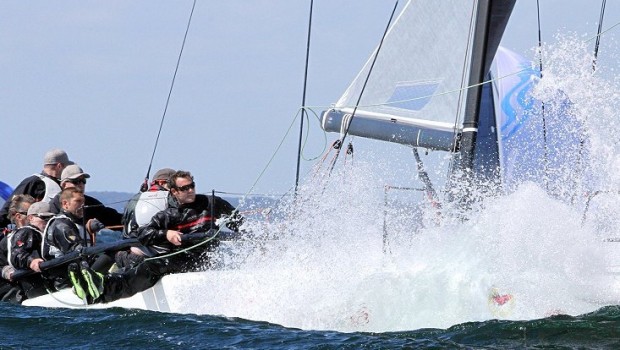


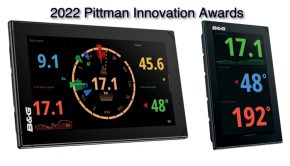
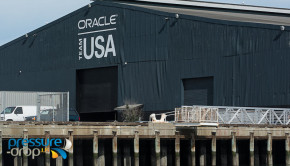
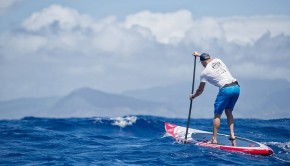
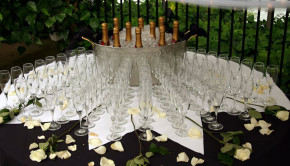
 We’ll keep your information safe.
We’ll keep your information safe.